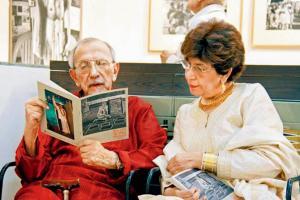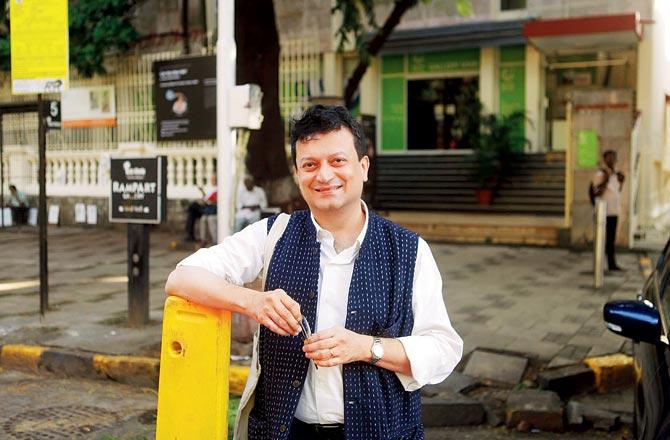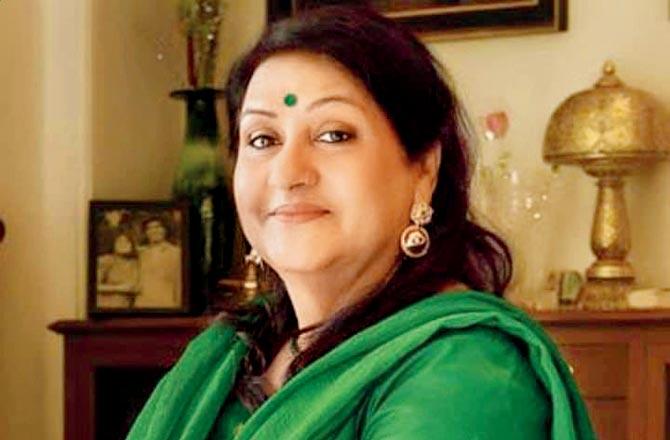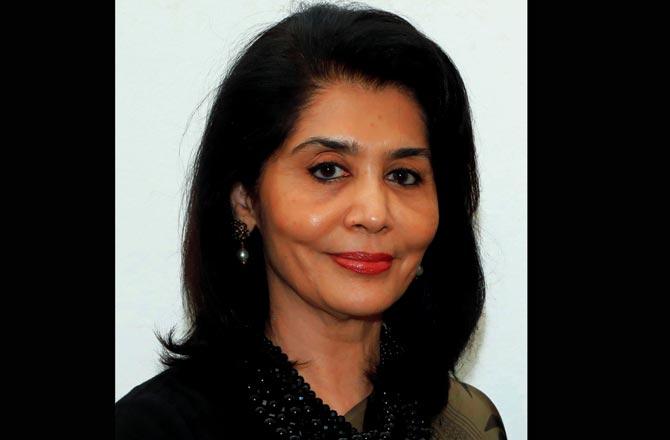
Ebrahim Alkazi with daughter Amal Allana. Pic courtesy/midday archives
"I am heartbroken, depressed and at an utter loss of words. It is a dark day for the world of Indian theatre. Whatever the theatre scene in India is today is thanks to Mr Ebrahim Alkazi. It may sound like a huge statement. But every word I just uttered is true," sighs Nadira Zaheer Babbar as she grapples with the news of her mentor's demise last evening in New Delhi at the age of 94.
Babbar had obtained a Diploma in Direction from National School of Drama (1968-71) under the mentorship of her professor, Alkazi; it was around the time when he was director of the prestigious institution. As a 37-year-old, he arrived in Delhi to head NSD and one of his first decisions was the staging of renowned playwright Dharamvir Bharati's Andha Yug at a time when the Indo-China war was over. Based on the last day of the Mahabharata war, the anti-war play became a landmark production in Indian theatre, and one of the finest examples of off-site theatre, as it was staged amidst the ruins of Ferozeshah Kotla fort, and later, at Purana Qila.
ADVERTISEMENT

Ranjit Hoskote
Bombay boy at heart
Born to Arab parentage in Pune in 1925, Alkazi arrived in Mumbai to study arts at St Xavier's College. It is where he met Sultan 'Bobby' Padamsee (Alyque Padamsee's elder brother) and joined his English-language theatre group. Later, he headed to England, to study theatre at the Royal Academy of Dramatic Art (RADA) in England before returning to Mumbai to begin his own group called the Theatre Unit in the 1940s and 50s.
Ranjit Hoskote, the cultural theorist and poet, also calls today (August 4) a "dark day because we have lost one of the foundational figures of modern Indian culture. His connection with Bombay was very strong and so even though he lived the better part of his life and worked in Delhi and New York, he was very much a Bombay boy where he went on to become a part of this great crucible of artistic experiments and adventure." It was a tremendous time in Bombay's cultural history. "When he returned to the city after training at the Royal Academy of Dramatic Art, London, he had a global vision. In many ways, he was one of the earliest cultural figures in Bombay and the then newly-Independent India."

Nadira Babbar
Alkazi was also an early champion of the Bombay artists like Tyeb Mehta, Akbar Padamsee, Krishen Khanna and the other greats through the 1950s. He followed their work and wrote and wrote about it extensively, reveals Hoskote.
Staging history
Even when he moved to Delhi to take on the role as director of NSD in 1962, he continued to stay connected to the art world. It was during his tenure [he was NSD's longest-serving director: 1962-77] that Babbar got to work in his productions, from Berthold Brecht's The Caucasian Chalk Circle to Girish Karnad's Tughlaq and Razia Sultan. "During his class on Western Drama, he would read out the works of the great, such as The Desire under the Elms by Eugene O'Neill. We would not just listen to his narration in rapt attention but also visualise every scene as he narrated it," she shares, revealing how he was a strict teacher known for his temper. "Yet, he loved us. He wanted us to become the best version of ourselves."

Tasneem Mehta
Raghubir Yadav, Anupam Kher, Satish Kaushik, Raja Bundela, Sushmita Mukherjee, and Raj Babbar were all his students. "Agar humaari zarra barabar bhi koi aukaat hai, it is only because of Alkazi Saab. We are standing where we are, thanks to him and the impact and influence he had on our lives when we started acting," she says. Babbar's connect with Alkazi went back to her growing up years because he was close to her father, Sajjad Zaheer, an Urdu writer, Marxist and radical revolutionary. "Both my father and Alkazi Saab were legendary writers and big names in the cultural scene of our country."
Across cities and genres
Alkazi went on to direct over 50 plays, including works by Girish Karnad and Mahesh Elkunchwar. Some of his famous directorial works were Samuel Beckett's Waiting for Godot, Mohan Rakesh's Ashadh ka ek din and Tughlaq by Karnad. The seminal figure was one of the first to focus on actor training and the criticality of visual impact in theatre production through set design, music and costume, his daughter Amal Allana recalled during an interview with this newspaper in 2016, reiterating how sets were like moving photographs.
Alkazi's work as a painter was less explored, believes Hoskote. He interacted with the icon closely in the early 90s and worked on exhibiting his early work as an artist last year. "He was a polymath. He was tremendously at home across the visual arts, theatre and photography. In the late 1970s, he and his wife Roshan started the Art Heritage Gallery where they promoted a whole new generation of Indian artists. It was Alkazi who gave Sudhir Patwardhan his first exhibition at Art Heritage in 1979." One of his closest friends was Hoskote's guru, Nissim Ezekiel; both had collaborated through the 1950s.
"Elk as he was known to his friends, was one of the most remarkable men of his generation. I spent some time with him over the years and always felt a little bit in awe of his persona," admits Tasneem Mehta, managing trustee and honorary director Dr Bhau Daji Lad Museum while remembering a meeting in London where he took her through his incredible archive of photographs as he was personally conserving many of the works. "He touched the photographs with great care — almost like a lover."
Later, he visited the BDL Museum as chief guest on the occasion of the opening of the photography exhibition, The Artful Pose that the museum had co-hosted with the Alkazi Foundation, one of his many legacies, in March 2010. It was curated by his grandson Rahaab Allana. "He was in a wheelchair but full of spirit even then. He had a keen eye for art and put together an unrivalled collection of Modern works from the time he was in Bombay which he continued to build over the years," adds Mehta. Interestingly, she tells us that he was hoping to establish a museum. "I very much hope his children and grandchildren will do in his memory."
For his contribution across theatre and the arts, he was bestowed with several honours including the Sangeet Natak Akademi award for Direction, the Padma Shri, the Padma Bhushan and the Padma Vibhushan.
Keep scrolling to read more news
Catch up on all the latest Mumbai news, crime news, current affairs, and a complete guide from food to things to do and events across Mumbai. Also download the new mid-day Android and iOS apps to get latest updates.
Mid-Day is now on Telegram. Click here to join our channel (@middayinfomedialtd) and stay updated with the latest news
 Subscribe today by clicking the link and stay updated with the latest news!" Click here!
Subscribe today by clicking the link and stay updated with the latest news!" Click here!







